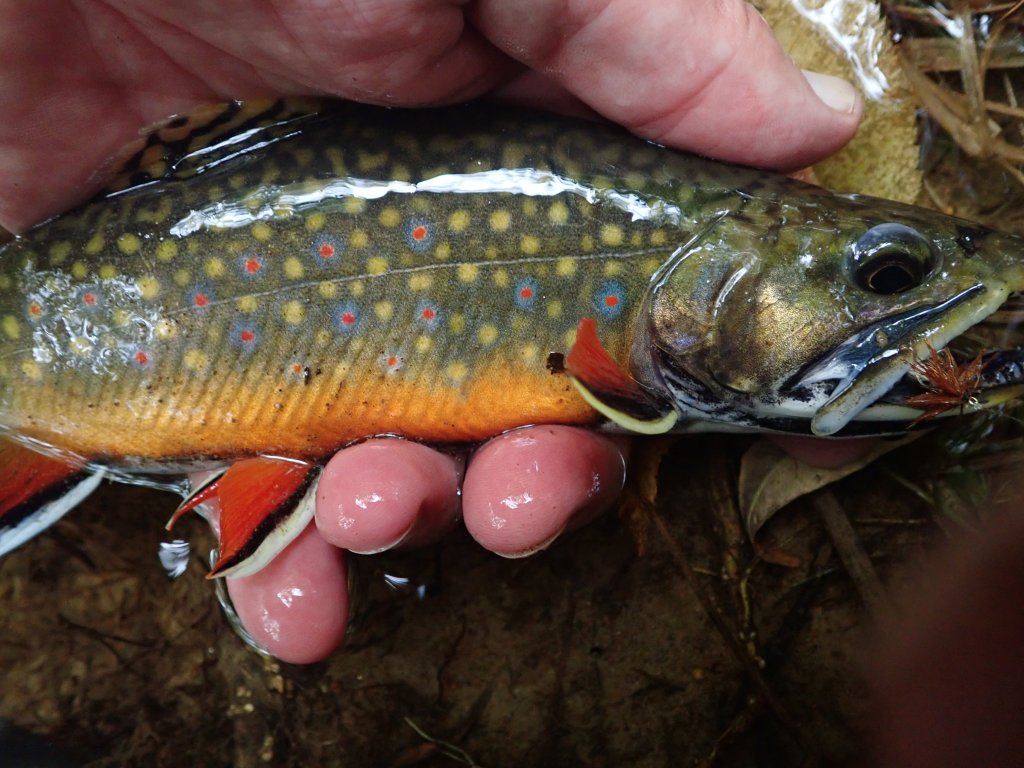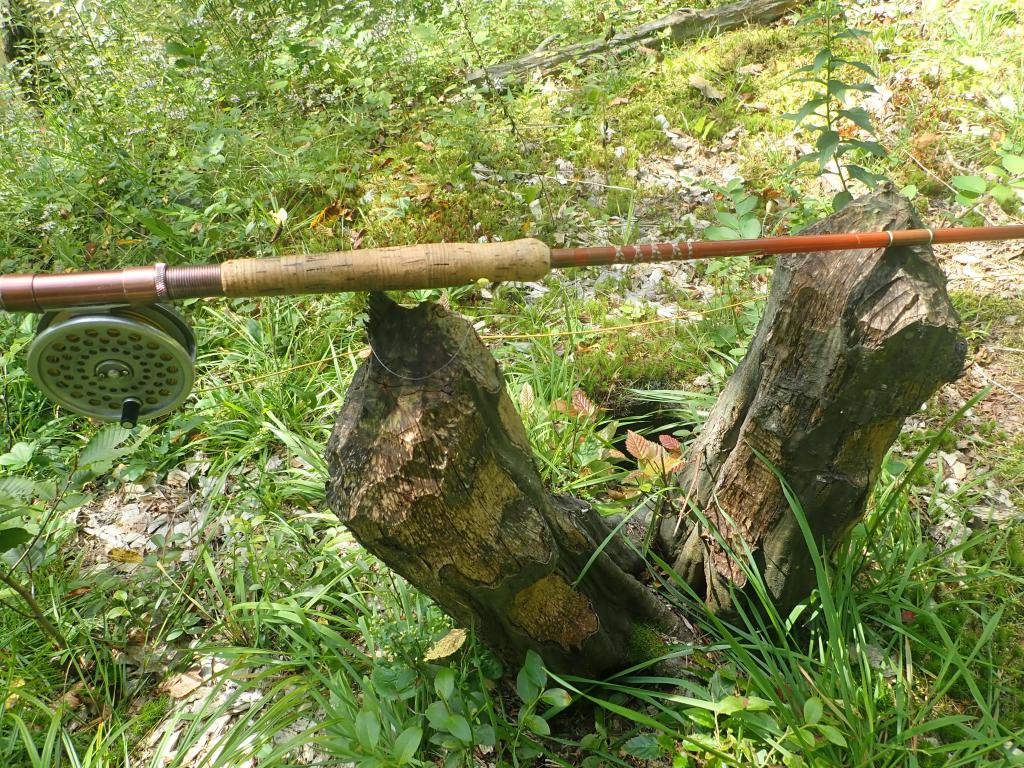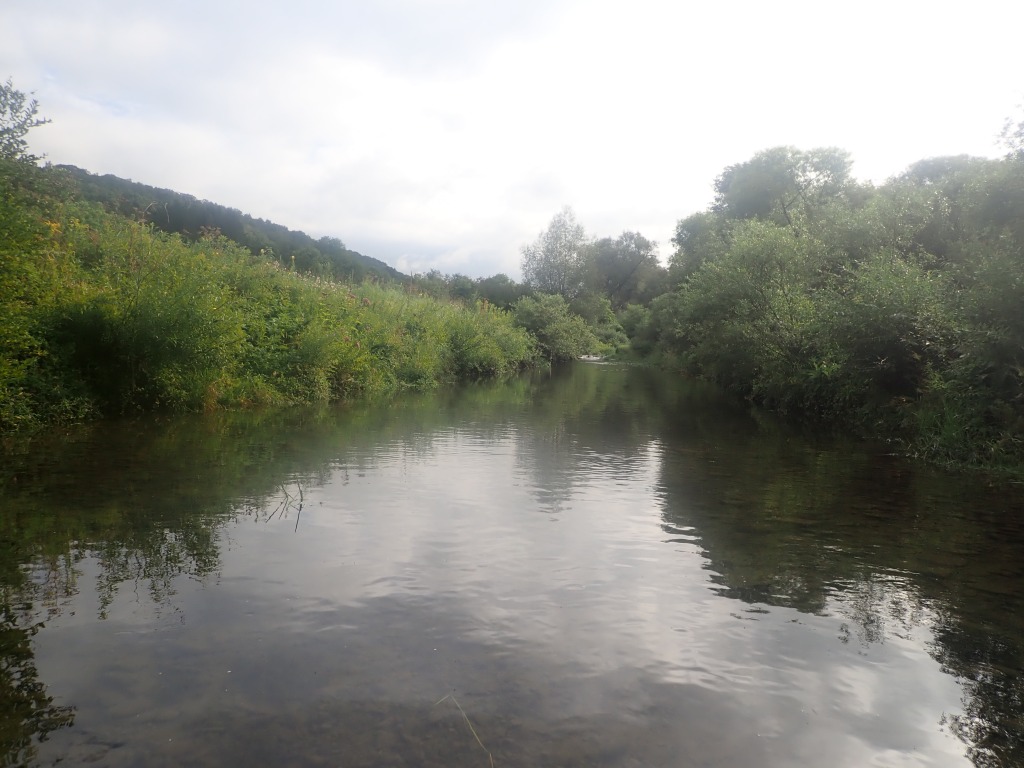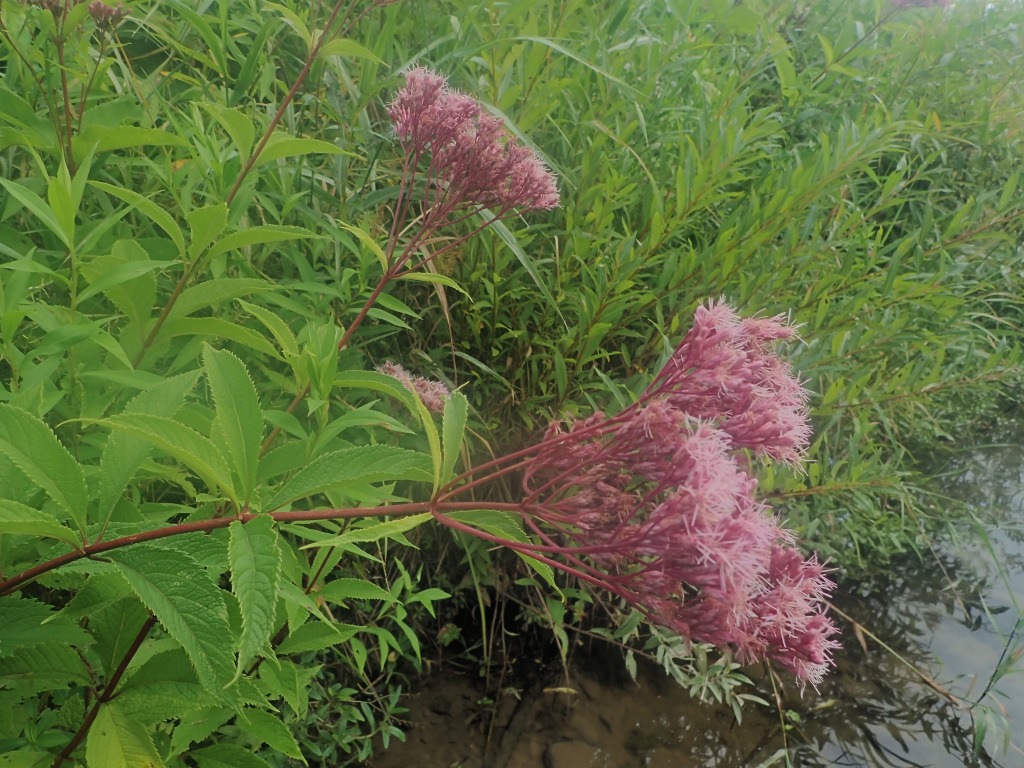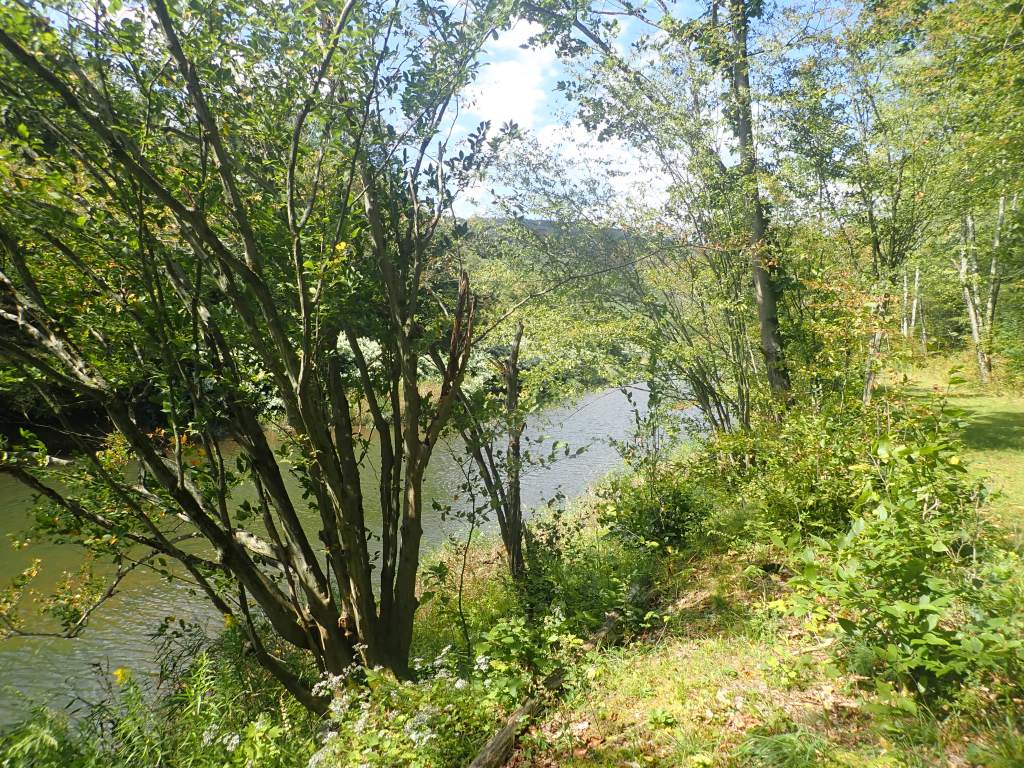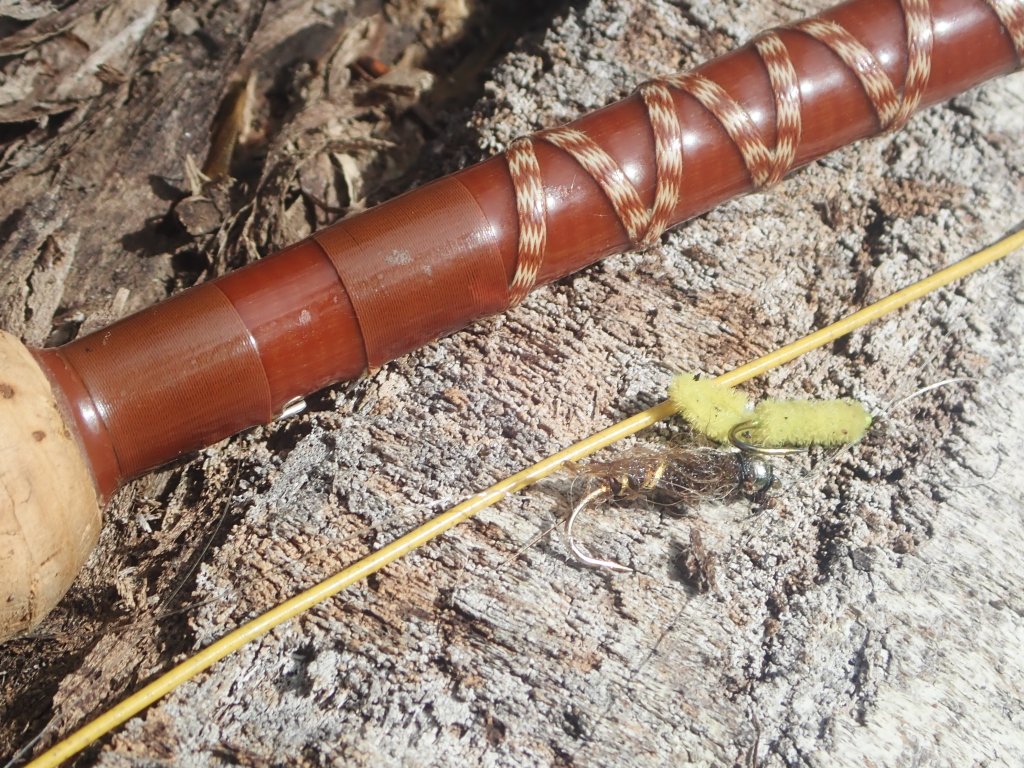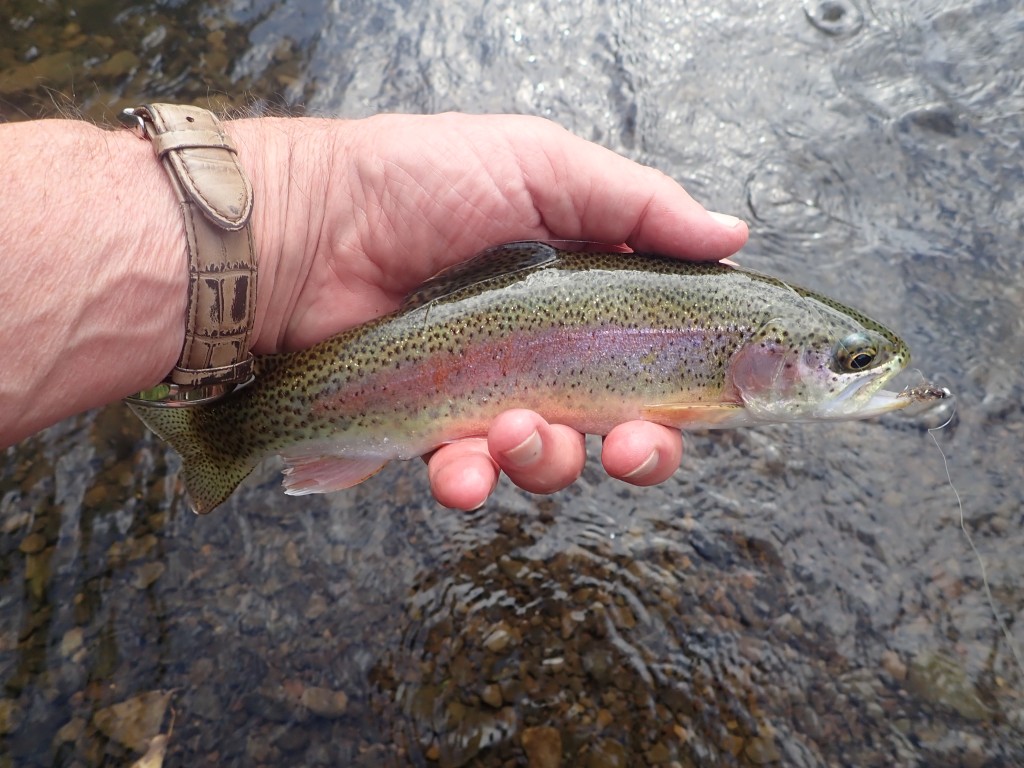My wife and I recently celebrated an almost blissful 41 years of marriage by visiting a couple of New York breweries and then, on the homeward trek, by stopping in Naples for an ice-cream fix. I enjoyed the (ahem!) fly-fishing fudge, married to a scoop of finely textured coffee. Next morning, I set forth on a visit to a local head water to see if the trout were staying cool enough. I had another anniversary to observe.
The water temperature in the deep-pool riffle registered at the upper-limit for trout comfort. At any higher reading I would not have made an effort. In likelihood, the browns and rainbows were stressed enough by late-summer conditions, but the watershed had recently experienced some cool nights and sufficient rainfall, so I was back at it. My love-affair with bamboo fishing rods had experienced some pangs of heartbreak recently, so I was on the water with my earliest rod infatuation– a 1973 Fenwick. Yeah, a 50-year-old fiberglass pole.
The year was ’73. My girlfriend at the time broke my first fly rod (an ugly yellow stick that I owned for a decade) when she slammed it in the doorway of my VW Bug. She felt so bad about the accident that she went out and bought me a much-improved instrument, the 5-weight 7’6″ Fenwick. I was thankful for the gift, certainly, and fished it intermittently for the next dozen years but, truth be told, I never cared much for it. I don’t know why. Maybe the “action” was unbalanced; maybe the design was a little goofy, whatever… And it didn’t help to know that graphite rods were becoming hugely popular at the time, no doubt much more efficient (and expensive) than the older glass utensils. I could not afford a decent graphite in those days, but I could dream.
Fashionable trends are no stranger to the fly-fishing business. I might have been trying to “keep up with the Joneses” back then but, in my defense, I was hitting the learning curve and didn’t really know any Jones people who were fly-fishing at the time. Remember, this was well before THE MOVIE starring that Pitt fellow. Then, by 1991, I acquired my first Orvis Superfine graphite and… it’s been downriver ever since (sort of).
Graphite came and graphite went. Bamboo came for me and (sadly) split-cane rods eventually lost their edge and went because of breakage and poor relations with custom repairs. But fiberglass arrived again, as vital as vinyl record albums, and I’m pleased with its toughness and its slower (than graphite) casting stroke. I had given the old Fenwick to a neighbor kid who used it for years and then suddenly returned it after he went out and bought his first graphite rod. Anyway, what goes around comes around. I reevaluated my antiquated fiberglass wand and wondered– what the hell was I thinking? I could now make 50-foot lawn casts accurately and with ease. What wasn’t there to like?
The only fish rising to a dry fly was an occasional chub. Not a good sign. Then I decided to fish a tandem rig: two wet flies– a Hare’s-Ear for the tail fly and a Green Weenie for the dropper. A drift through the cool deep riffle brought immediate action. A rainbow took the Hare’s-Ear, and a brown trout took the Weenie before the action ended almost as quickly as it started. The fish were set free from the old fiberglass rig, and the present moment melded with the bygone era for a brief but pleasant overture.
